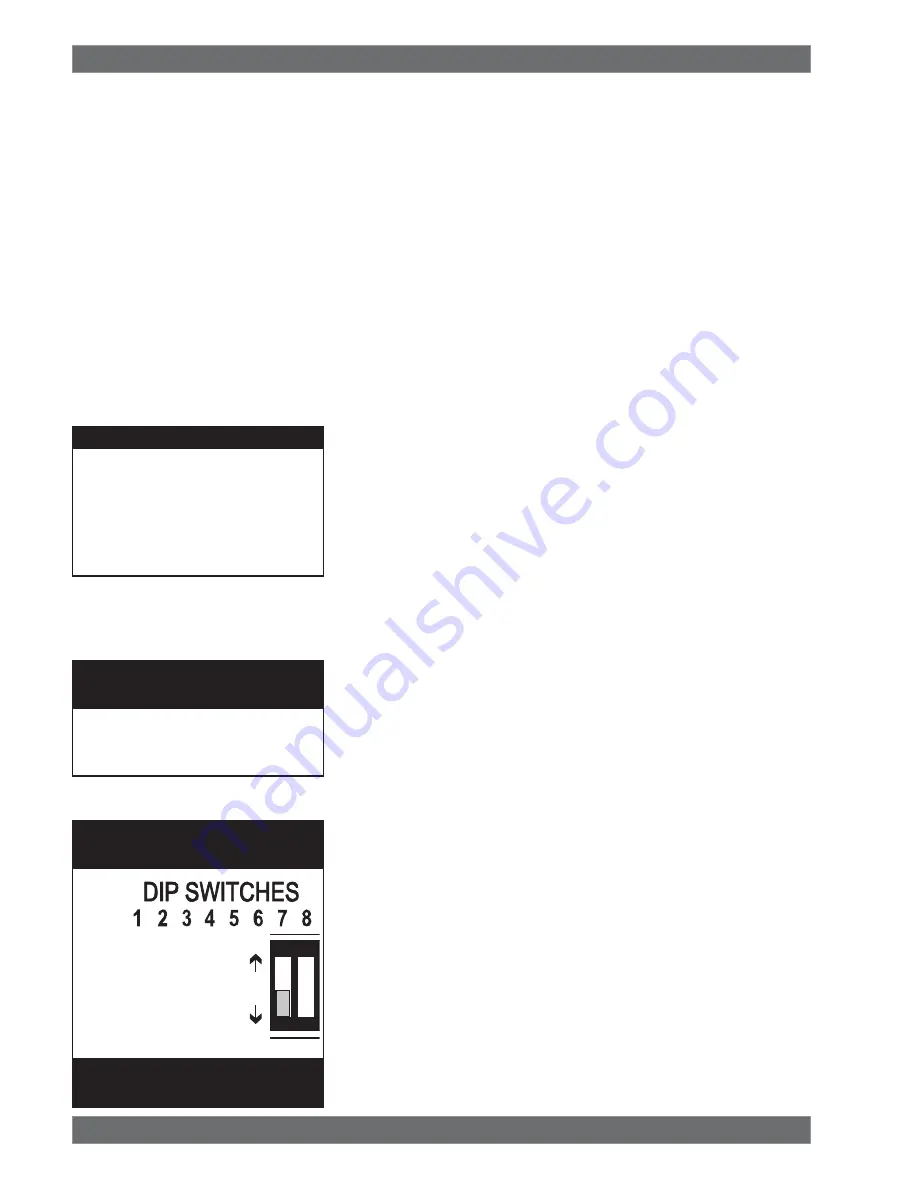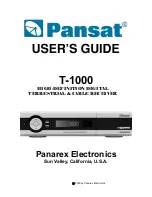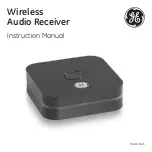
40
Sabine 2.4 GHz Smart Spectrum
®
Wireless
© 2007 Sabine, Inc.
13.1.3. Software Multiple Unit Control
The true extent of the power of the SWM Remote Software is realized when it
is used to control multiple wireless receivers. When ND-series receivers
are connected in a network, the additional controls offered by the Remote
Software over the entire system include:
•
Simultaneous multiple channel/system monitoring. The Remote Soft-
ware “All Channel View” (figure 13h) shows all important status condi-
tions for up to 70 transmission channels. Color-coded warnings and
alerts draw attention to potential problems.
•
Detailed, quick access to a single set of controls. The “Command
View” (figure 13c) displays comprehensive information about a single
selected RF channel, and easy adjustment of all its controls. Channels
are selected by clicking the appropriate All Channel View button. (NOTE:
Each channel display in the All Channel View also allows quick access
to parameter adjustments, by using the right mouse button to popup a
parameter control menu.)
•
Quick, interactive control of wireless network channels. All or se-
lected parameter settings for a given channel can be copied to one or
more additional channels, using the Copy Parameters option.
13.2. Software Installation
13.2.1. Requirements & Recommendations
•
PC Minimum Requirements: Pentium 266 MHZ CPU or AMD Duron
CPU; 128 Megabytes of RAM; 20 Megabytes free space on hard drive;
Windows 95 or higher.
•
PC Recommended Requirements: Pentium 1.0 GHZ CPU or AMD
Athlon CPU; 512 Megabytes of RAM; 20 Megabytes free space on hard
drive; Windows 2000 or XP.
•
SVGA or greater resolution graphic card and monitor. Recommended
minimum monitor resolution: 1024 x 768 pixels (or 800 x 600 pixels for
15 inch monitors). Select “small fonts” and 16 bit color as defaults for
monitor display. Windows XP users select 96 dpi screen settings.
•
USB or Serial COMM Port.
13.2.2. Connections
There are three types of connections that are used in a remote controlled
one-or two-channel Sabine SWM7000 system:
•
Serial port (RS-232 9-pin): Use this to connect to a single receiver, or
the first receiver in a network (multiple receivers). Be sure to use a cable
with standard 9-pin D-connectors (male on one end, female on the
other) that is a “serial,” not a “null modem” cable.
•
USB: Use this to connect to a single receiver, or the first receiver in a
network (multiple receivers).
NOTE: Some SWM7000 receivers may not have a USB port. In this
case, simply use a USB to RS-232 9-pin adaptor. Go to Sabine.com for
a list of suggested adapters.
•
Network (multiple SWM7000-ND series receivers):
1. Connect the first receiver in your network to the PC using a USB cable
or an RS-232 Serial Cable (not supplied).
2. Connect all other receivers as a chain using RS-485 (or standard
Ethernet) cables. There are two such jacks on the back of all ND-series
receivers. Either jack can connect to another receiver either “upstream”
or “downstream” from the computer remote control. As signals travel in
both directions (from computer to receiver and back), it is not necessary
to connect the last receiver in a network back to the computer (you do not
need to make a “loop”).
Remote Control Operation
USB DRIVERS
Your USB enabled SWM7000 receiver
requires version 2.0 or above software.
Installing this software will also install the
necessary USB drivers onto your com-
puter. If at any time you need to re-install
USB drivers, use the software CD sup-
plied with your receiver, or download them
from Sabine.com.
NETWORK
CABLE CONNECTIONS
Connect the first receiver of a network
using a USB or RS-232 9-pin connection.
All subsequent receivers connect to each
other via RS-485 connection.
UP: All but the first re-
ceiver connected to a
network.
DOWN: First receiver
connected to the net-
work.
NETWORK
DIP SWITCH SETTINGS
See page 55 for a chart of all
DIP switch settings.
















































